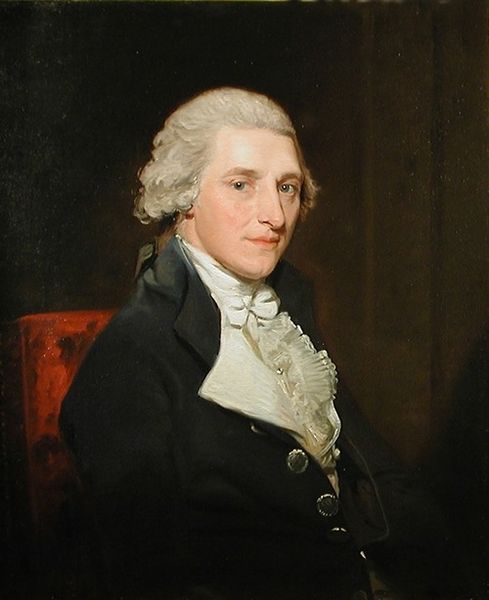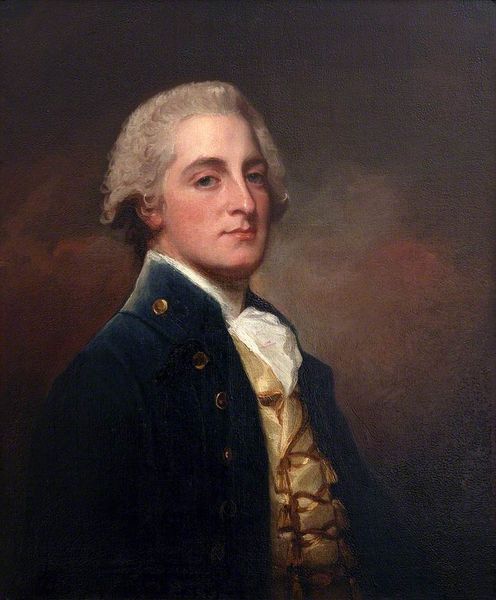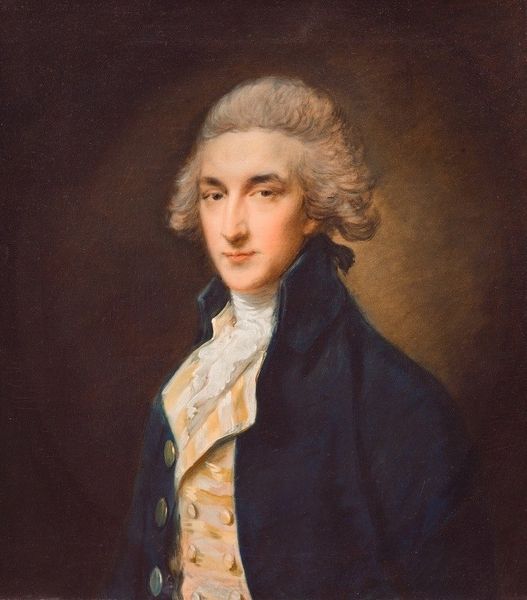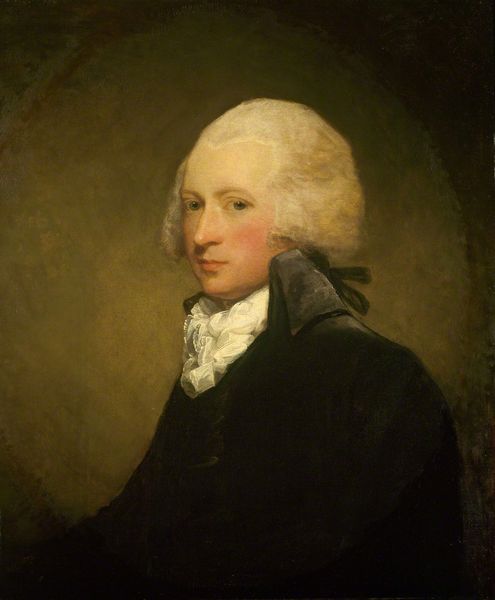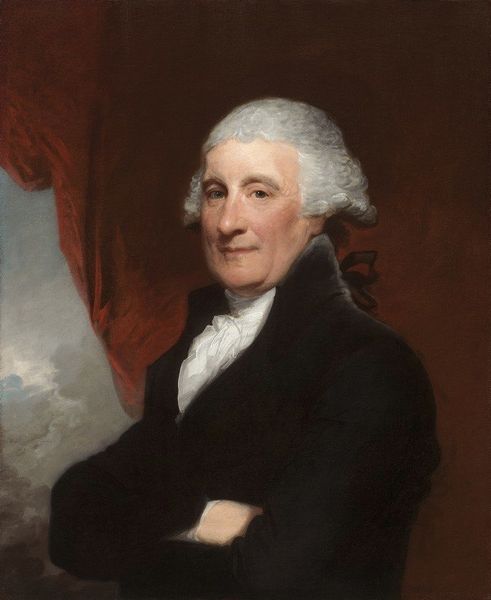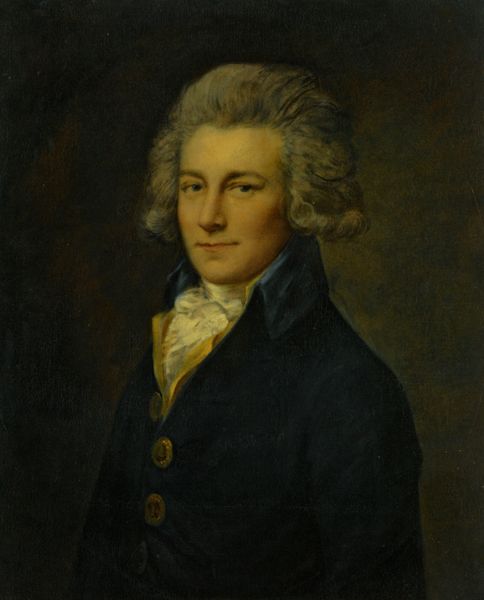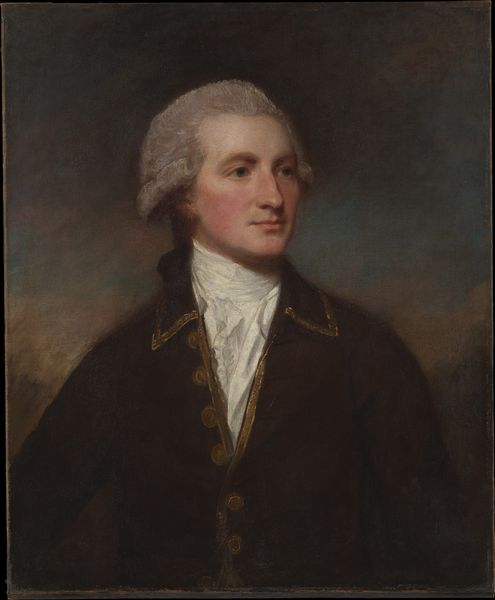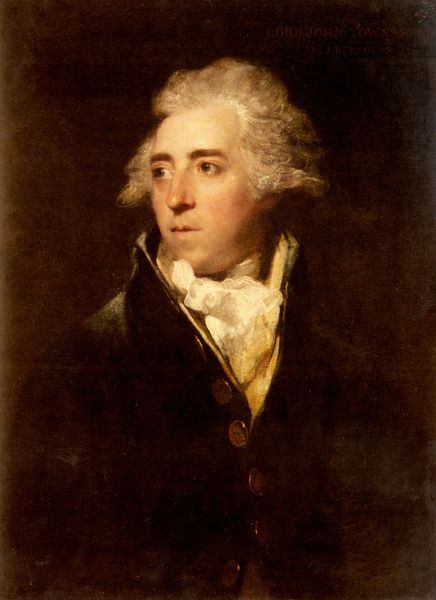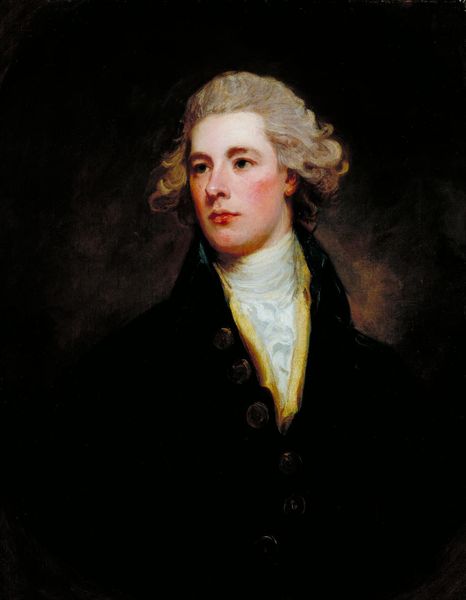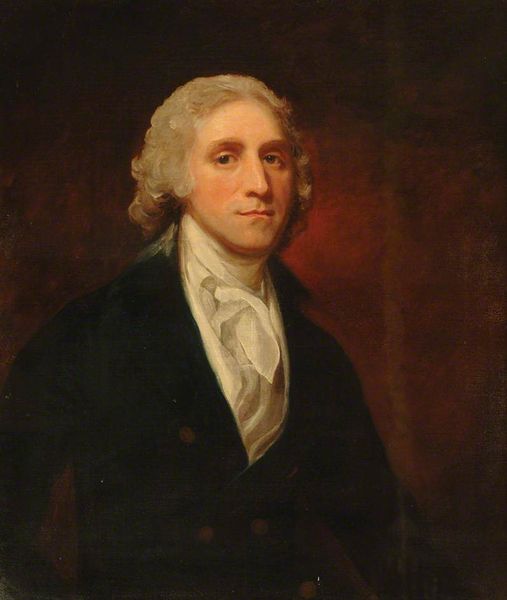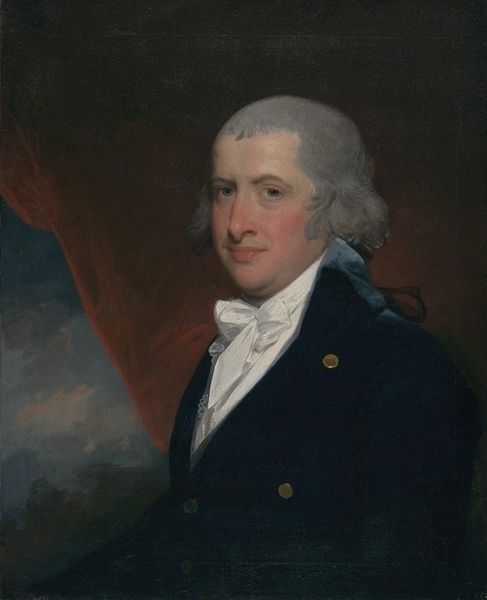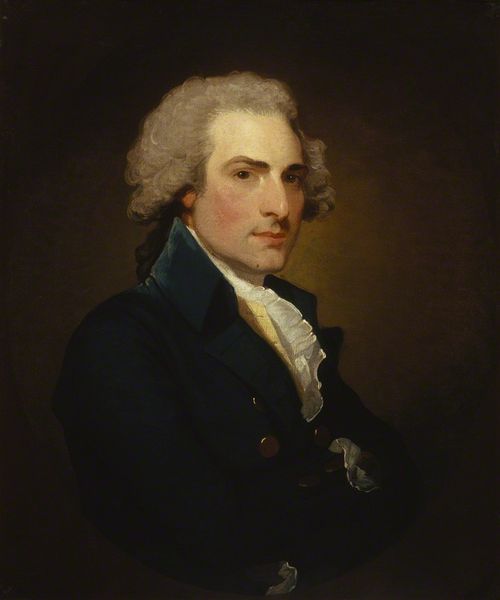
Copyright: Public Domain: Artvee
Curator: This intimate oil-on-canvas is George Romney’s "Portrait of Richard Palmer," dating from 1787. He seems almost suspended in shadow. Editor: Yes, the darkness certainly amplifies the subject’s slightly apprehensive gaze. I immediately pick up a reserved almost melancholic air. The minimal use of color is striking. Curator: Precisely, that sense of introspection is enhanced by the almost symbolic contrast of light and dark, emblematic of enlightenment ideals battling internal reservations. Think about what a portrait like this meant; it was more than just an image. It cemented one's place in the social hierarchy. The careful brushstrokes speak volumes about his status, the velvet collar… Editor: Absolutely. And in terms of the socio-political implications, patronage was key here. Romney benefited from the wealth of individuals such as Palmer. Consider how these power dynamics impacted artistic expression; portraits became vital political tools shaping one's public image and their legacy. The painting acts as a material document reflecting the social strata and value systems in late 18th-century Britain. Curator: Indeed. But look closer, beyond the mere depiction of status. Notice the unfinished quality of certain strokes, the conscious artistic choice not to strive for complete realism, almost like an admittance of the limitations of social portraiture. I wonder, did Romney perceive the facade in depicting Palmer? Editor: Perhaps he was subtly hinting at the constructed nature of identity. The lack of background details might reflect a conscious move away from overtly illustrating status to focusing solely on the psychology of the sitter, resonating perhaps with shifting sensibilities amid political unrest in Britain at the time. It seems Palmer did come from an immensely wealthy background. His own legacy is intertwined with those estates now; this painting contributes to that constructed image. Curator: A fitting reminder that behind every painted face, an entire world of unspoken symbols, anxieties, and ambitions persists. Editor: It urges one to question how portraiture throughout history shapes, reflects, and perpetuates social structures, offering fascinating commentary for generations to come.
Comments
No comments
Be the first to comment and join the conversation on the ultimate creative platform.
